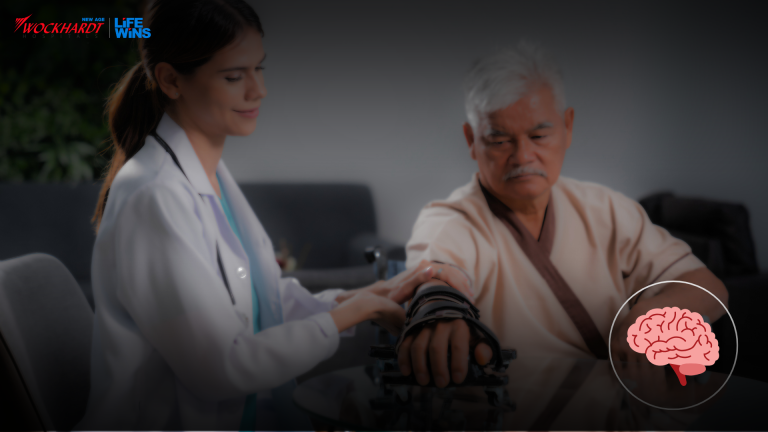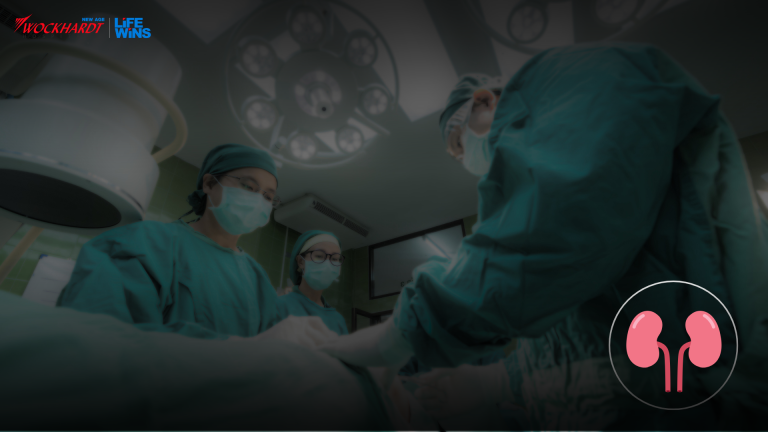Gastro Cases are on the Rise, Doctors Blame Contaminated Water
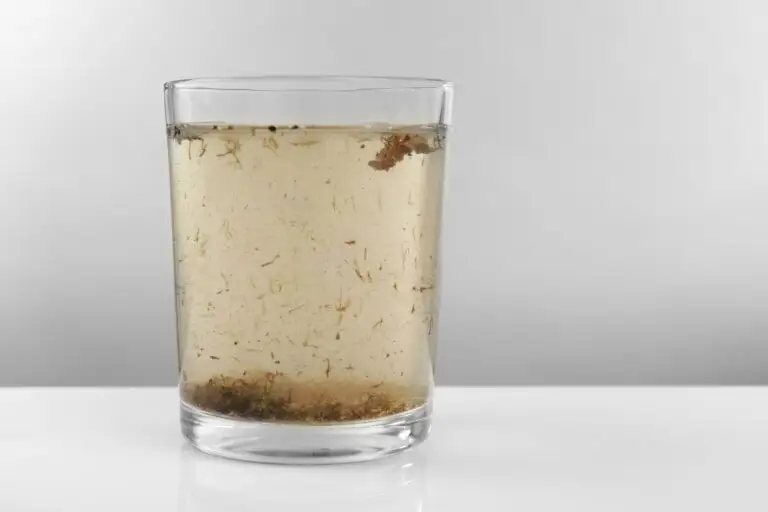
As many as 2,441 gastroenteritis cases have been reported in Mumbai since January this year, with 78 cases in the first few days this month alone, as per a BMC health department report. In 2020, the city witnessed 2,549 gastroenteritis cases and 3,110 in 2021. Officials said cases are fewer as compared to the numbers in pre-Covid days. However, the numbers are more than what was reported in the last two years. Executive health officer Dr. Mangla Gomare said the BMC is conducting water surveillance for possible contamination. “We will be testing samples from ice factories, and are keeping a close watch if there is any trend in gastroenteritis cases from any part of the city. The BMC feels that people have become complacent in hand washing. Hand hygiene can keep many diseases away,” she said. Meanwhile, private hospitals are also witnessing a rise in gastro cases as people are more liberal about eating out than in the earlier coronavirus waves. “As part of the surge in gastro cases, patients have been complaining of persistent vomiting, dysentery, severe abdominal cramps and severe weakness,” said a senior infectious disease expert. He said, in a few cases, patients also reported fever. The expert said, “Most people get dehydrated on day one itself and that’s the reason few of them require to be admitted. Most of these cases are viral gastroenteritis and settle down within two to three days.” He said, weakness however persists for a few days. Confirming that acute gastroenteritis is on the rise, Dr Shakar Zanwar, a gastroenterologist from Wockhardt Hospitals in Mumbai, said that cases in people under 20 years are on a rise. He said, “Apart from diarrhoea, some are experiencing vomiting and abdominal pain. The most probable cause could be contaminated water.” Dr Kishore Sathe said, “People are intermingling after extended Covid restrictions. They are eating at public places and probably that has led to the rise.” How to Avoid Gastro Infection To book an appointment call: 022-61784444 Source: https://www.freepressjournal.in/mumbai/mumbai-gastro-cases-on-the-rise-doctors-blame-contaminated-water
Dr. Uday Chandankhede Performed Extremely Rare Case in Nagpur

A 26 year old female suffering from an extremely rare ailment got a new lease of life at Wockhardt Hospitals in Nagpur after being successfully treated by Dr. Uday Chandankhede, Consultant-Uro-Oncologist. She had underwent many blood, urine and radiological investigations for the same and was on antibiotics for more than a year. Her MRI and CT scan was suggestive of mass lesion located in her bladder. For which she had underwent cystoscopic guided mass removal but the mass was not seen in the bladder. After few months she underwent the laparoscopic surgery for the mass removal, but due to unfavourable anatomical location the mass not seen during the surgery and the procedure was abandoned. She has taken opinion from many urologist but none of them were sure about the diagnosis and was kept on observation. Later, the patient visited Dr. Chandankhede for the opinion. On enquiring she was not suffering from the urinary tract infection but instead symptoms related to the hormones secreted by the tumour like giddiness, palpitation after passing urine. On examination her blood pressure was on normal side 110/70 but after passing urine her blood pressure increased to 180/110. Specific blood test called as plasma free nor-metanephrines showed increased levels which give rise to index of suspicion in support of diagnosis i.e secreting paraganglioma. Paraganglioma is one the rare disease and that too extravesical paraganglioma is one of the extremely rare location. She was started on anti-hypertensive medications for 2 weeks for stabilization of hormone secretion and control of blood pressure. After stabilization she was planned for mass excision. She has underwent successful surgery of the mass excision and was kept in ICU for blood pressure monitoring. Now she is being discharged in stable condition with normal blood pressure and no symptoms of giddiness and palpitations. To book an appointment call: 0712-6624100
New strain, drop in temp during monsoon will lead to surge in Covid-19 cases, say experts
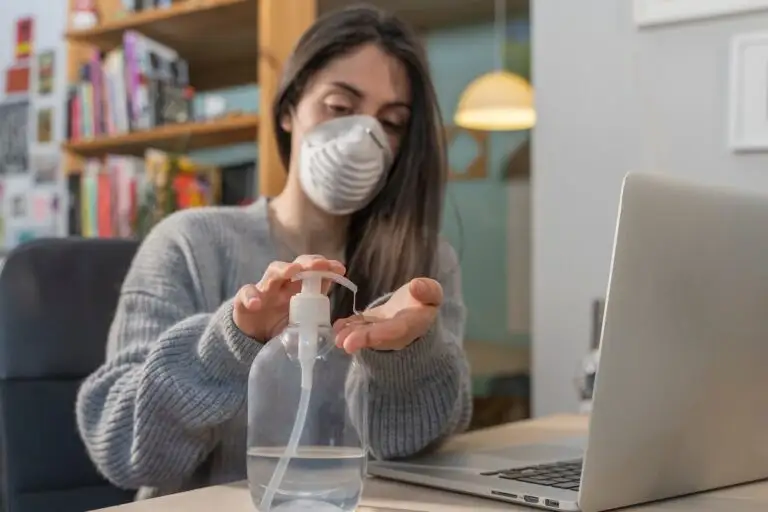
A new strain of COVID-19 (BA.2.12.2) and a dip in the temperature with the arrival of the monsoon will lead to a surge in the novel Coronavirus infections. A set of experts mid-day had spoken to earlier this year were the first to hint about the likely rise in cases by June. With cases already rising over the past few weeks, the experts have stressed the need for the public to follow COVID-appropriate behaviour. The new strain is a sub-variant of Omicron. “For the foreseeable future, the coronavirus SARS-CoV-2 will continue evolving into new variants that lead to fresh waves of surging COVID cases across the world. Sub-variants of Omicron coming from South Africa and the US/Europe were predicted to cause a surge in cases in India by July 2022. The size of the wave will be determined by cold weather due to the rainy season. This newspaper carried this story way back in February when many virologists and epidemiologists discarded the scientific predictions of wave 4 that was otherwise supported by IIT Kanpur groups,” said Dr Subhash Hira. Citing an earlier report in mid-day, Dr Hira said he and other experts had recommended that high prevalence states of India during wave 3 should not dismantle their COVID barrier and treatment facilities till the world is finally done with the pandemic. Few in hospitals, really? Dr Wiqar Shaikh said, “Be it plague, cholera, measles or influenza, all have had multiple waves before they finally abated. Why should COVID-19 be an exception?” Dr Shaikh said he is shocked that people have been gloating over the fact that despite the uptick in cases, there are hardly any hospitalizations and deaths. He said that both hospitalizations and deaths will increase when Covid-19 cases jump to several thousand a day. Dr Shaikh said that when the 1st wave came to an end, everyone thought that the pandemic was over. “People threw caution to the winds, threw away their masks and mingled with huge crowds. But India did get a 2nd wave [the deadly Delta variant] and the 3rd wave [the Omicron variant]. Several countries such as South Africa, USA, European countries, have already had a 5th wave.” He also rued the removal of the mask mandate. He urged people to compulsorily wear masks and follow social distancing. Exercise caution Dr Ketan Vagholkar, said the BA.2.12.2 strain is more contagious and likely to be associated with severe illness. “… With the onset of monsoon on the anvil, the temperatures will vary significantly. This will predispose to respiratory infections. However, with newer variants of COVID emerging, citizens are advised to exercise caution. The usual flu-like illness needs to be taken seriously. Self-medication is to be strictly avoided. Citizens should seek medical advice immediately and receive medications under strict physician supervision,” he said. Need good screening Dr Santosh Bansode, HoD, Emergency Medicine, Wockhardt hospitals, said it’s concerning that the new variant is spreading fast in California. “So, we need good screening at our airports. We don’t want any variant which spreads fast to enter our country. We must encourage people to take booster doses of vaccines and wear masks when at crowded places or places where ventilation is not good. Hand hygiene is also important,” said the experts. He added, “People should keep their nutrition well and should try to live life with less stress to keep their immunity good. Rest, how Covid will spread and how serious symptoms it will give only time will tell.” Dr Santosh BansodeHoD, Emergency MedicineWockhardt Hospitals, Mumbai Central To book an appointment call: +918291101001 Source: https://www.mid-day.com/amp/mumbai/mumbai-news/article/mumbai-drop-in-temperature-during-monsoon-will-lead-to-surge-in-covid-19-cases-say-experts-23230449
Calcific Coronaries Treated by New Technique IVL
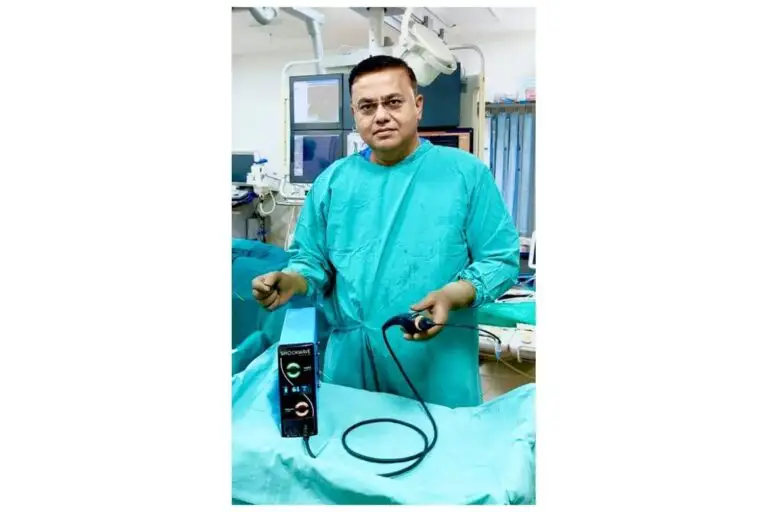
A 76-year-old patient who was suffering from hypertension and diabetes for 30 years got treated by Dr. Nitin Tiwari, Senior Consultant- Cardiology. He was advised of bypass surgery and was not ready for the same. Hence Dr Tiwari advised him on Angioplasty with help of IVL (Intravascular lithotripsy). According to Dr Nitin Tiwari, “This is a path-breaking therapy which is revolutionizing the treatment of hard plaque in Coronary arteries world over and I am glad that this is now available in India to patients in India. This will bring hope for many patients whose arteries could not be opened by balloon angioplasty because of calcium build up and were considered for Bypass Surgeries or left on medical management.” Calcium slowly develops and progresses to its hardened, bone-like state over the course of several decades of cellular growth and death in diseased plaque within the heart arteries. Shockwave Intravascular Lithotripsy is a novel procedure which brings hope for those suffering from an advanced form of coronary artery disease (CAD) having angina or heart attack in which the blockage becomes very hard due to deposit of calcium. This happens in 20% to 25% of the patients especially those who are elderly, diabetic, have chronic kidney disease, have long standing blockages or previous bypass surgery. Previously to tackle this, heavily calcified blockage, there were only drills called Rotablator or ultra-high pressure balloons, cutting balloons etc which are difficult to use and carry risk of rupturing the artery. Intravascular Lithotripsy launched by Shockwave Medical, USA is an innovative technology that generates sonic pressure waves to break up problematic calcium so that artery can be opened with ease and blood flow restored with the placement of a stent. The therapy leverages a similar minimally invasive approach that has been embraced by physicians for decades to treat kidney stones which are also made up of calcium. Hardened calcified blockage is a big challenge to treat by angioplasty and stents and is getting commoner. Such blockages can now be opened with ease and safety to give patients the best result for long term. The sonic pressure waves are produced when performing intravascular Lithotripsy which gives a novel, safe and proven treatment option to break the calcified plaque with potentially less risk of injury to the artery compared to other treatment. While it is slow to develop, its impact is immediately encountered when performing procedures in calcified lesions. The calcium's hardened structure restricts normal artery movement and makes the rigid arterial tissue resistant to traditional balloon therapies that have been designed to compress the plaque within the artery wall to restore normal blood flow. For these reasons, the presence of calcium increases the complexity of most cases and decreases the effectiveness of most treatments. Dr. Nitin TiwariSenior Consultant- CardiologyWockhardt Hospitals, Nagpur To book an appointment call: 0712-6624100 Source: https://thelivenagpur.com/2022/05/31/calcific-coronaries-treated-by-new-technique-ivl-at-wockhardt-hospitals-nagpur/
How do I know my child is growing well?

A child’s growth is assessed by measuring his/her weight, length (for a child up to 2 years), and height (for a child >2 years age). To know if your child is growing well, your doctor will check your child’s weight, length/height, and compare with that expected for age and gender of the child. To do this the doctor will use growth charts. Growth Chart A growth chart is a simple graph in which your child’s body parameters are plotted at the age at which the measurement is done. The growth chart is utilized to maintain longitudinal record of a child’s growth parameters. It helps to track the growth of children from birth through adolescence to adulthood. On the growth chart, curves of normal growth have been drawn based on measurements of thousands of normal children. As expected, there is variation in height and weight among normal children. Plotting on a growth chart helps us to decide if a child’s growth parameters fall within the normal range or not. A healthy child will have the growth parameters [weight, length/height, and body mass index (BMI)] within the highest and the lowest curve expected for the age and sex. If a child’s parameter is above the 97th centile or below the 3rd centile line on the growth chart, it indicates that the child’s parameter is below/beyond what is seen in nearly 94% children of his/her age. These children should be evaluated for a possible growth problem. An even better assessment of your child’s growth can be made by a serial recording of growth parameters Your doctor can also assess and plot if the child’s weight is appropriate for his height. This is done by plotting on a weight for height chart for children up to 5 years age, and on a BMI chart for older children. Dr Vishal ParmarConsultant PediatricianWockhardt Hospitals, Mira Road To book an appointment call: +918108101104
World Milk Day: 1 June, 2024

World Milk Day is an international day established by the Food and Agriculture Organization of the United Nations to recognize the importance of milk as a global food. It has been observed on June 1 each year since 2001. Our body changes and what was good for our health in childhood need not suit us as we age It’s a common sight in almost every household: Elders running after children with a glass of milk in hand. The children throwing tantrums to avoid drinking the white liquid. As we grow older, the white liquid changes into flavoured milk, coffee, or tea. The conditioning that we have had in childhood that milk is good for our health becomes part of our adult lives as well. However, many health experts have sparked debate over milk and its importance in diets for adults. Our body changes and what was good for our health in childhood need not suit us as we age. And, one fine day we realize that milk is no longer suiting our health, making us lactose intolerant. “According to research, medical professionals do not recommend adults to have milk and related products. It is due to the necessary enzymes required for digesting milk being present only in children up to three years of age,” explains Dr Smriti Jhunjhunwala. Milk is said to be a rich source of calcium. Children need more calcium to strengthen their bones in their growing-up years. But, it doesn’t have the same benefits in adults. Rather, the lactose present in milk is linked to health problems. Dr. Shankar Zanwar, Consultant Gastroenterologist, Wockhardt Hospitals, Mumbai Central, says milk intolerance happens due to a low level of digesting enzymes. “This leads to diarrhea, flatulence and occasional pain. Hence, doctors advise avoiding milk if a patient is suspected of lactose intolerance.” The serious issue is many people are sensitive to casein, a milk protein. It might result in symptoms such as vomiting, wheezing, skin rash, sinus infection, or even anaphylactic shock, explains Functional Nutritionist Mugdha Pradhan. It is a common belief that milk consumption helps in age-related muscle loss and muscle regeneration. However, many studies have claimed otherwise. A study published in the American Journal of Clinical Nutrition in 2007 examined in detail the correlation between calcium intake and the risk of bone fractures. The study found no connection between total calcium intake and fractures. Another study that appeared in The BMJ made similar claims. The study consisted of men and women older than 35 years of age. Consuming milk lent no protection to men and women, rather it was associated with increased death risk. Many are aware of the recent common practises of using drugs and procedures in cows and buffaloes to aid in producing more milk. This results in toxin accumulation, infections, and serious health problems like cancer, cardiovascular diseases, and more. According to Edwina Raj, Senior Dietician, consuming full-fat dairy or milk at a higher level is linked to a higher risk of hormonal imbalance and prostate and gastric cancer. “But large studies with evidence are still necessary to further incorporate this as guidelines. Since milk is a poor source of iron and high in kidney solute load, it is discouraged in infants below one year. Some of them may have cow’s milk protein allergy.” Adding to Raj’s statements, Dr Saniya Wasim, says that milk and other dairy products are prime sources of saturated fats. “Their uninhibited consumption is directly related to various cardiovascular disorders due to clogging of arteries, diabetes, and malignancy and to an extent Alzheimer’s.” There is no cure for lactose intolerance and making dietary changes is the only solution to avoid health problems. In such a case, replacing milk with lactose-free options or choosing foods like kale, broccoli, tofu, nuts, beans, whole grains, etc., can prove beneficial in getting essential nutrients. Food That Does Not Usually Contain Lactose: To book an appointment call: 022-61784400 Source: https://www.freepressjournal.in/health/world-milk-day-is-milk-unhealthy-for-adults-experts-weigh-in
Launched Breast Cancer Support Group

There is a growing burden of breast cancer in India. It is one of the deadliest cancers and a major health concern not only in the country but globally. Lack of awareness regarding breast cancer led to higher mortality and morbidity rates in the patients. Wockhardt Hospitals, launched a Breast Cancer Support Group, at the facility to spread awareness among all generations. The aim is to spread the message that breast cancer patients have a good survival rate and can lead a normal life. Experts Dr Aditi Agrawal, Consultant Breast Oncosurgeon, and Dr Atul Narayankar, Consultant Medical Oncology, addressed the event by educating everyone about the importance of regular mammograms, breast self-examination, diagnosis, counseling, the right treatment approach, quality care, and maintaining a well-balanced diet and exercise routine after getting diagnosed with breast cancer. There is a growing burden of breast cancer in India. It is one of the deadliest cancers and a major health concern not only in the country but globally. Lack of awareness regarding breast cancer led to higher mortality and morbidity rates in the patients. The risk factors for this cancer are smoking, alcohol, family history, late marriages, and avoiding breastfeeding, and the treatment of the disease is based on the stage of cancer. The objective of this support group is to know that breast cancer patients have good survival and they can lead a normal life after completion of treatment though there would be regular follow-ups. “Breast is one of the common types of cancers seen in women. Many women fail to notice changes in the breast or neglect them, suffer in silence and lose their precious lives. There are many myths related to breast cancer that can keep one away from seeking timely help. Timely screening, diagnosis, and an array of treatment options can save lives. The patient will have to get support to cope with the physical and emotional changes of cancer and follow the instructions of the doctors to ensure a good prognosis of the disease. We want every woman to know that she should opt for self-examination at 20, clinical examination after 30, and mammography after 40 years on a regular basis,” stated Dr. Aditi Agrawal, Consultant Breast Oncosurgeon, Wockhardt Hospitals. Dr. Atul Narayankar, Consultant Medical Oncology said, “Breast cancer is not only limited to older women. Nowadays, it is predominantly seen in the younger population. Many women get depressed and go through a wide range of emotions. The diagnosis and treatment take a toll on one’s mental and physical well-being. Losing breast due to mastectomy is associated with dissatisfaction with appearance, perceived loss of femininity, and body image and integrity. It can take some time for a woman to adjust to a new body shape after breast cancer surgery. We have come up with a support group to send the message that breast cancer is preventable when diagnosed and treated during its early stages. Women should have a proactive approach and their partners, friends, and family members also encourage them to take utmost care of themselves. Remember, together we can fight breast cancer wholeheartedly.” “Breast cancer diagnosis was shocking for me. I just couldn’t come to terms with the diagnosis. I was unaware of the treatment process. But the prompt treatment given made my journey to fight the disease smoother. Breast cancer can strike anyone at any time. So, women should conduct breast self-examination and report any changes in the breast to their treating doctors. I am a proud breast cancer survivor and thank the hospital for taking such a big step in helping others to clear their doubts and take utmost care of their health. Patients lose hair or have other issues due to chemotherapy, and need support. I hope I am able to encourage others like me to battle cancer and conquer it. Do whatever it takes to become a survivor,” concluded the breast cancer warrior Ms. Shalini. Dr. Aditi AgrawalConsultant Breast OncosurgeonWockhardt Hospitals, Mira Road Dr. Atul NarayankarConsultant Medical OncologyWockhardt Hospitals, Mira Road To book an appointment call: +918108101104 Source: http://bwhealthcareworld.businessworld.in/article/Wockhardt-Hospital-Launches-Breast-Cancer-Support-Group-/27-05-2022-430412/
Myopia Awareness Week: Almost 17% of Children Suffer from it
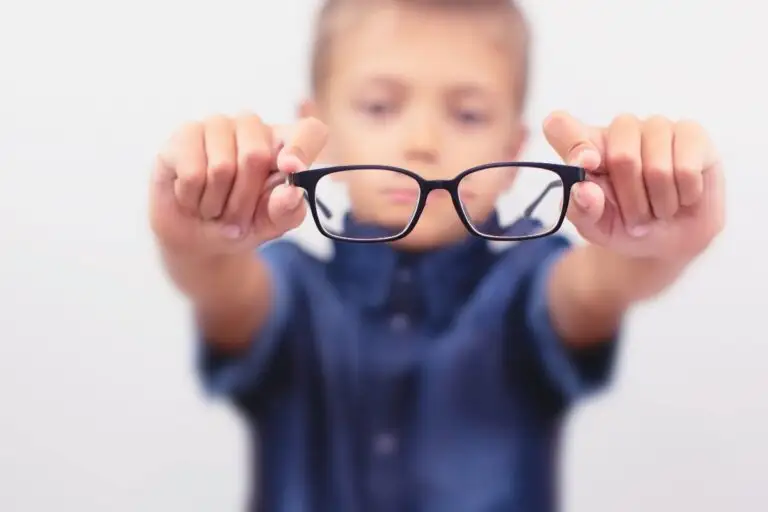
According to a study done by the All India Institute of Medical Sciences, 17 percent of children or one out of six children aged between five-15 years are suffering from myopia. The UN data says that countries where myopia prevalence was estimated and measured as low in the past, such as India, will have major increases by 2050. The Myopia Awareness Week, set for May 23-28 each year, aims to bring attention to the global epidemic of short-sightedness cases in children. The theme this year is: Make your Eye Moves. On this day experts spoke with News9 on the reason for the rising prevalence in the country. According to Dr. Jaidhrath Kumar, there has been a rise in cases of myopia in children in the recent past. “In the last two years, every second child who comes to us has myopia – either their power has increased or they have become myopic. The incidence is so large that we think that it is COVID-induced myopia or due to lockdown,” Dr. Kumar said. Seconds Dr. Sandeep Kataria, consultant Ophthalmologist with Wockhardt Hospitals in Mumbai Central. “We are seeing a rise in myopia in kids. This is because their screen time has risen in the last few years. Indoor activities and reading among kids have gone up especially those till the age of 17. If a child complains of headaches or sits too close while watching TV are some signs that parents need to catch on to. Early detection of myopia can to a certain extent reduce the rise in power,” Dr. Kataria said. Reasons for Myopia The reason is simple. When the pandemic hit, everyone was locked in their homes. With no outdoor activity, kids took to playing games on their smartphones or laptops. Reading increased, classes went online and the amount of screen time went exponentially high. “The kids were staring at the screens from up close. They were constantly staring at their screens. Whenever you are working on things that require closely looking at things, it induces myopia. This happens in kids the minute they are of an age where they can start reading – usually four to five years. Earlier, parents were a lot more careful. They didn’t randomly hand over gadgets to children. Now, by default, they have no choice which has led to an epidemic of myopia in kids. In the next couple of years, we are going to see many kids who will require spectacles due to myopia,” Dr. Kumar explained. Symptoms of Myopia Some common symptoms that a child may face are squinting of the eyes which signifies that the child is making an effort to read or see what is in front of him. Second, watery eyes mean the child has been staring at the screen for too long. Three, constantly rubbing their eyes; this means that he is unable to see things clearly and hence the rubbing. Finally, when the kid says he can’t see things. However, if the child is quick to point out weak eyesight then myopia is preventable. “There are several things that can be done to stop the onslaught. One must sit properly – this means to sit on a chair with the books or the laptop at least 33 cm away from you. One must do eye exercises – blink your eyes several times; look away from the screen every 20 minutes for 20 seconds. One must also eat a well-balanced diet. The kids and even adults must eat a diet that is rich in vitamin A. Eating green leafy vegetables, carrots and papaya will help make good retinal cells which are good for our sight and vision,” Dr. Kumar said. While surgery options are available, it is not for kids since they are still growing. “As kids pick up height, the eye length also grows. Surgery is only possible when the person stops growing. Myopia increases with age. Once it has started, the eyesight will deteriorate till a person is a full adult. We recommend surgery only if a person has not had a vision correction for at least six months,” Dr. Kumar said. Dr. Sandeep KatariaConsultant OphthalmologistWockhardt Hospitals in Mumbai Central To book an appointment call: 022-61784400 Source: https://www.news9live.com/health/myopia-awareness-week-2022-almost-17-children-suffer-from-it-number-will-rise-exponentially-by-2050-172395
Man Born without a Jaw on Living with Otofocial Syndrome

Born with a rare congenital disorder called Otofocial syndrome Chicago resident Joseph Williams does not have a jaw. Despite undergoing numerous surgeries, experts have not been able to construct a jaw as his “body rejected it”, according to various reports. Due to the condition, he is unable to speak or eat using his mouth. He uses sign language to communicate and eats through a tube. Sharing his life experiences with Caters News Agency, William revealed how people treat him differently due to his medical condition, reported New York Post. But he always kept his spirits high by telling himself that “there is a reason that God made me like this”. The 41-year-old also opened up about finding love in his wife Vania who he met in 2019, as he said: “We were friends at first, but we eventually started dating and fell in love. We got married in 2020. I’m sure people would never have expected me to get married. To be honest, I didn’t think I would either.” Here’s all you Need to Know About the Medical Condition. According to rarediseases.org, it is a condition in which a child is without a mandible, and, consequently, without a chin. “This disorder affects the development of one’s mouth and is present at birth itself. The symptoms can persist and worsen as one ages,” said Dr. ChandraVeer Singh, consultant otorhinolaryngologist, Head and Neck Onco Surgeon, Wockhardt Hospitals Mira Road. Causes This condition happens due to a mutated gene, said Dr. Singh. “In a person with this condition, the tongue will be underdeveloped, making swallowing impossible. Survival becomes challenging, too. It can take a toll on one’s physical and mental well-being. One will have to use sign language or write notes to communicate. Those with this condition require life-long tubal feeding,” said Dr. Singh. Treatment Treatment can include reconstructive surgery for facial clefts, removal of extra teeth, and surgery to repair fused fingers or digit anomalies. It can also include treatment of renal disease including hemodialysis/peritoneal dialysis or a kidney transplant, explained Dr. Shishir Aggarwal. “Management of seizures, if present, and evaluations for learning disabilities may be required based on the type of the syndrome. Speech therapy and special education are also recommended. Other treatment is supportive and based on symptoms,” said Dr. Aggarwal. Agreed Dr. Singh and added that people with this syndrome need to be monitored closely. “The treatment for this syndrome will be surgery. So, one will have to follow the guidelines given by the doctor.” Dr. ChandraVeer SinghConsultant Otorhinolaryngologist, Head and Neck Onco SurgeonWockhardt Hospitals Mira Road To book an appointment call: +918108101104 Source: https://indianexpress.com/article/lifestyle/health/chicago-man-without-jaw-otoficial-syndrome-rare-genetic-symptoms-treatment-causes-7933146/
Monkeypox Alert: Confirmed Cases in Canada and UK: Expert Says India Should be Careful as Tourist Season Begins
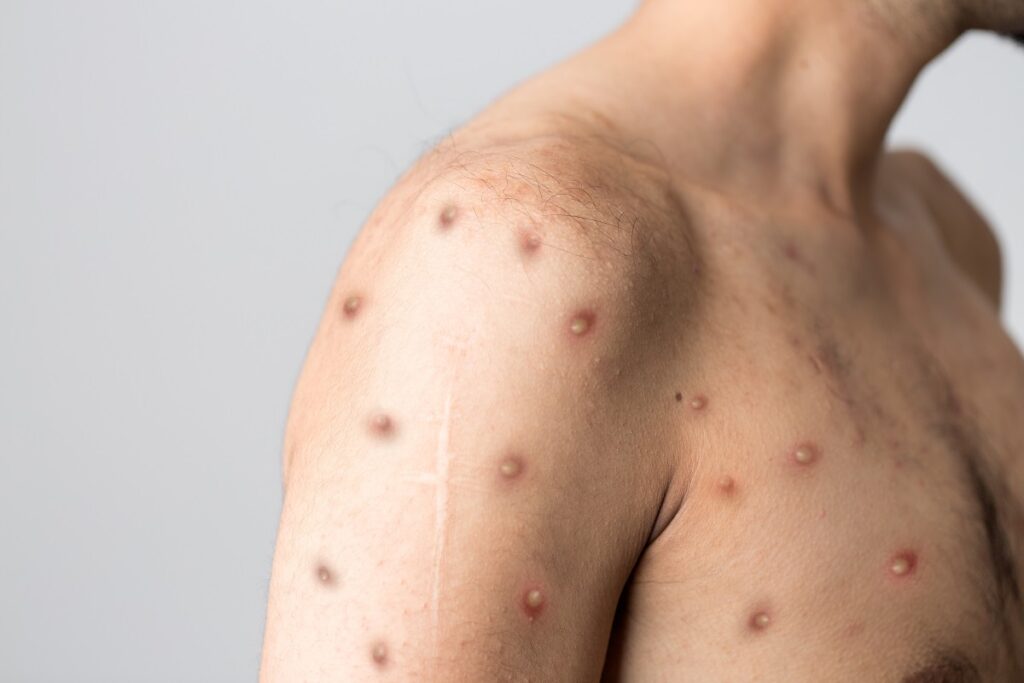
Infectious disease experts in India say there have been no reported or suspected cases of monkeypox yet but with tourist season opening up, there is a high chance that the infection may ‘travel” to the subcontinent. Canada confirmed its first two cases in Quebec while 30 more are suspected to be also infected with the virus. This is adding to the growing number of cases in Europe and North America. Spain and Portugal have detected over 40 suspected cases of monkeypox, a viral infection rarely seen in Europe. Should India be worried? Dr. Behram Pardiwalla, Head of Medicine, Wockhardt Hospital, Mumbai told News9 that so far we have not seen any cases in the country. “However, the country has to be on alert since people have started traveling. Usually, the viral infection spreads through human contact and the person has to be exposed to the infected person for a prolonged period before he can get infected. It is thought that the reservoir is in the rodents (mice, rats). It is also thought that the incidence of the infection is more in gays,” Dr. Pardiwalla said. He also said that the chances of the infection coming to India can be mitigated if the people are careful while traveling. “They must stay away from those who have skin rashes. Monkeypox is not an infection that can be hidden. There are pustules (bulging patches of skin that’s full of a yellowish fluid) all over the skin,” Dr. Pardiwalla explained. He said that the person can get monkeypox only after the infected person develops pustules. “One has to be in very close contact – less than two feet of distance – for the person to get the infection. Otherwise, it is not possible to get this infection,” Dr. Pardiwalla said. What is the Transmission Rate? This is a communicable disease in humans. While only limited human-to-human spread has been reported thus far, it was estimated that the transmission rate was 3.3 percent to 30 percent. But in the recent outbreak in the Democratic Republic of Congo, the transmission rate was estimated at 73 percent. The World Health Organization reported a total of 75 cases and two deaths due to monkeypox in the Democratic Republic of the Congo in the last week of February. During the first two months of 2022, 704 cases have been reported with 37 deaths. What is Monkeypox? It is a rare usually mild infection, typically caught from infected wild animals in parts of Africa. According to the NHS website, the disease is a relative of smallpox, causing a rash that often begins on the face. It was first recorded in the Democratic Republic of Congo in the 1970s. The number of cases in West Africa has increased in the last decade. WHO Tracing the Virus During a conference, World Health Organization’s Maria Van Kerkhove said, “We are working very closely with our regional office and other agencies to evaluate each of these cases, the source of the infection, and forward contract tracing so that there is no further human-to-human transmission.” “Several studies are underway to understand the extent of the circulation of monkeypox. We are ensuring that testing is happening along with the isolation of people who are suspected of having monkeypox,” she added. Dr. Behram PardiwallaHead of MedicineWockhardt Hospital, Mumbai Central To book an appointment call: 022-61784444 Source: https://www.news9live.com/health/monkeypox-alert-confirmed-cases-rising-in-europe-and-uk-expert-says-india-should-be-careful-as-tourist-season-begins-171347











